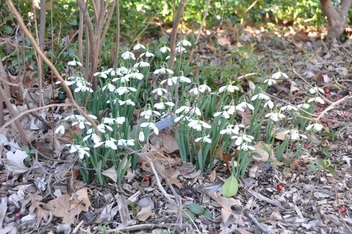
My favorite was 'Ballerina" a gorgeous frilled double with an upturned face so you could see her beauty. Unfortunately she was not for sale and would not be for the next few years -- a search on the internet did not yield any better result. Another pretty double one was "Lady Beatrix Stanley", I decided to hold out for Ballerina and stick to the common (and much cheaper) Galanthus nivalis "Flore Pleno" if I wanted to indulge in a double variety.
There was a great double planting of Hamamelis 'Jelena' and 'Moonlight' -- which Charles told us he was replacing with Wisley Supreme, a variety with more fragrant bloom that doesn't hold its leaves -- he had handpicked the leaves off Moonlight for the right effect. He had winter aconites planted in groupings as large as teh Hamamelis' drip line for maximum impact.
Camellia 'April Remembered' was in bloom -- a beautiful light pink flower that is fully hardy and blooms for three months from mid Feb through May. 'Spring's Promise' and 'Lucian Snow' were others he recommended -- Lucian Snow is a fall bloomer with the best cinnamon bark of any camellia that will bloom from Mid October - Thanksgiving. I also admired the daffodils planted around ferns -- brilliant idea as the flowers will hide the ugly fern fronds and then the ferns will cover the dying daffodil foliage. Close by was planted Ilex Koehneana, a great English/Chinese hybrid that was covered with scarlet berries the birds do not touch.
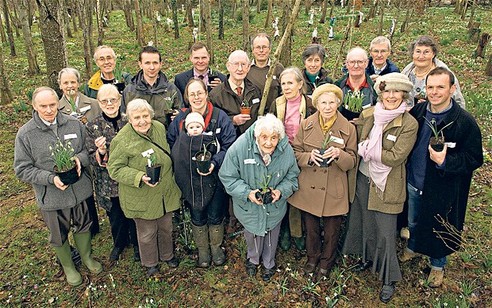

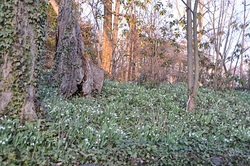
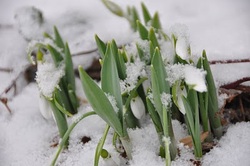
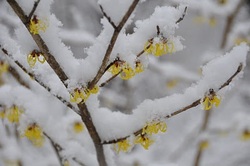
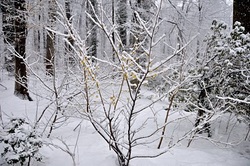

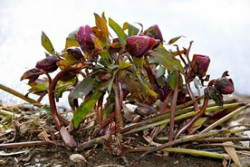
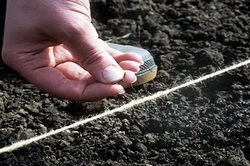
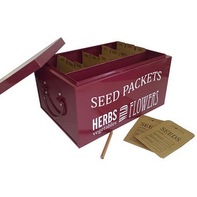

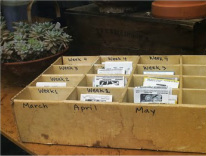
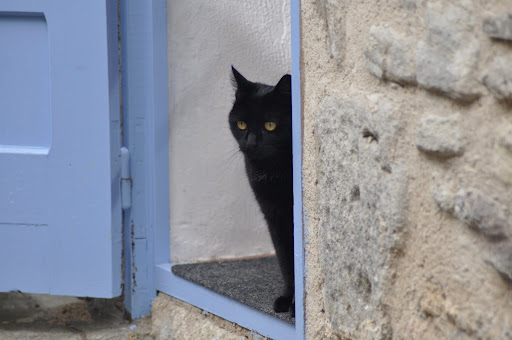
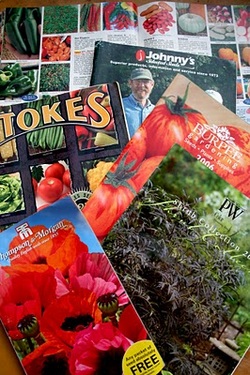
 RSS Feed
RSS Feed
